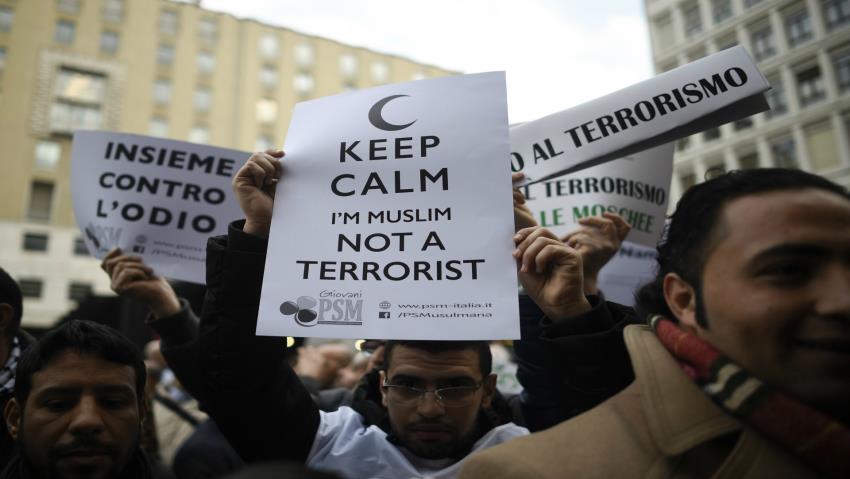
Is radicalisation a discourse manufactured by academia to perpetuate government policy?
by Francesca Fiennes
The issue of radicalisation is a pressing one, following an increase in global terror attacks and subsequent measures to prevent terrorism. This has led to debatable academia produced on radicalisation, discriminatory profiling and has framed radicalisation in a generalised, ideological context.
Throughout this post I will engage with Kundnani’s work, arguing that scholars who examine theological and social-psychological models of radicalisation fail to grasp the wholly individual causes for committing acts of violence. Academic discussion upon radicalisation is constructed in a specific manner to be utilised by government bodies, and lacks in-depth analysis of wider geo-political issues that end up being invisibilised.
Certain questions need to be answered in order to critique current discourses and gain understanding into power relations that inform these:
- What is radicalisation?
- How has academic research responded to it?
- What profile of people fall under the umbrella of the term?
- How has radicalisation been portrayed in the media?
Initially, radicalisation must be defined. It mainly evolved as a term following 9/11, when terrorist attacks began to be perceived as a global threat. The term now has a direct association with Islamic extremist violence or terrorism and the ideological process that regular citizens may go through to become radicalised. It was previously associated with the radical left and nationalist movements, such as the IRA.
Radicalism – related to beliefs and ideas, leading to transformative change and can relate to actions or behaviours. However, ideas don’t necessarily translate into actions and behaviours.
Some extremists may engage with radicalism without participating in acts of violence. However, radicalisation is a separate discourse, becoming misappropriated within a continuum of what being radicalised actually is, and to what extent intervention (counter-terrorism measures) is legitimised. The concept of radicalism, being influenced by ideological notions, is not intricately examined in the sphere of academia; radicalisation remains the dominant term informing discourse around terrorism.
Academic research is a government-funded industry. This aims to find intervention solutions, as opposed to examining the cultural, economic or political factors that enable individuals to become susceptible to radicalisation, as advocated by Kundnani. Muslim populations are constructed as ‘suspect communities’, particularly through programmes such as Prevent. Campaigns have sprung up around civil rights abuses of the programme, claiming it criminalises Muslim communities that have no affiliations with extremist ideology. Whilst government policy may attempt to deconstruct radicalisation, it results in further perpetuating the term in its narrow analysis. It is portrayed as an unreformable issue, bordering authoritarian notions by surveilling those who could be extremists. This is often done through profiling of potential terrorists.
A typical profile is of young men of a certain socioeconomic background, particularly immigrants of Arabic or Islamic descent. In order to develop a model to determine or prevent radicalisation in government policy, trends have to be mapped in order to create a standard approach for its prevention. This presents a significant methodological weakness by creating a one size fits all model. Researcher Matthew Francis, of Lancaster University, suggests we should aim to look at pre-conditional factors enabling the potential for radicalism to become violent or extremist, as opposed to searching for a standardised terrorist profile.
It is interesting to examine the media response to radicalisation and acts of terrorism. Attacks in Europe of a smaller scale are often reported more heavily than those of a wider scale within countries that Islamic State has control over, such as Iraq and Pakistan. Following reports of intense devastation, the Western world, myself included, become more aware of the destruction occurring.
Certain bodies are classed as terrorists and victims, of which could be owing to the academic discourse on radicalisation and the profiling that has followed. However, more foreign fighters join IS from other countries of the Middle East than Europe, and more of their victims are Muslims in countries where they are more active in the Middle East. There has been online speculation in comparisons between the killers of Lee Rigby, a soldier, and the killer of Jo Cox, a Labour politician. Whilst the crimes were similar, seemingly based on his non-Islamic affiliations, Thomas Mair, a secular individual, was not tried under counter-terrorism legislation.
There are unclear distinctions within discourses of radicalisation that need to be clarified if they inform government policy. It has been argued that confusion between terms means that radicalisation causes more of a threat- the words terrorist, extremist, Jihadi etc. are interchanged on a number of platforms, losing significant meaning of each term. Government policy should aim to avoid these overarching generalisations and stereotypes, engaging in not only more in-depth analysis as advocated by Kundnani and Francis, yet also with wider geopolitics (view it as a global social challenge over a European or British one).
Radicalisation, according to Kundnani, is a self-perpetuating term, and fits comfortably into Islamophobic discourse. Right-wing media such as the Sun newspaper and Fox News in the US, alongside powerful figures such as Donald Trump, essentially perpetuate Islamophobia through the discourse of immigration also. The two discourses have been linked with racist attacks and hate crimes within Europe, with an increase particularly around events like Brexit or following terror attacks within Mainland Europe. Cultural sensitivity and acknowledgement of the academic discourse manufactured for government policies such as Prevent are necessary to continually examine what purpose radicalisation discourse serves.
Does it prevent, understand or stereotype radicalisation?
References
Kundnani, A. (2012). Radicalisation: The journey of a concept. Race & Class, 54(2), 3-25.
The Future of the Global Muslim Population
Paris attacks

Mad writing skills and so thought provoking!!!!